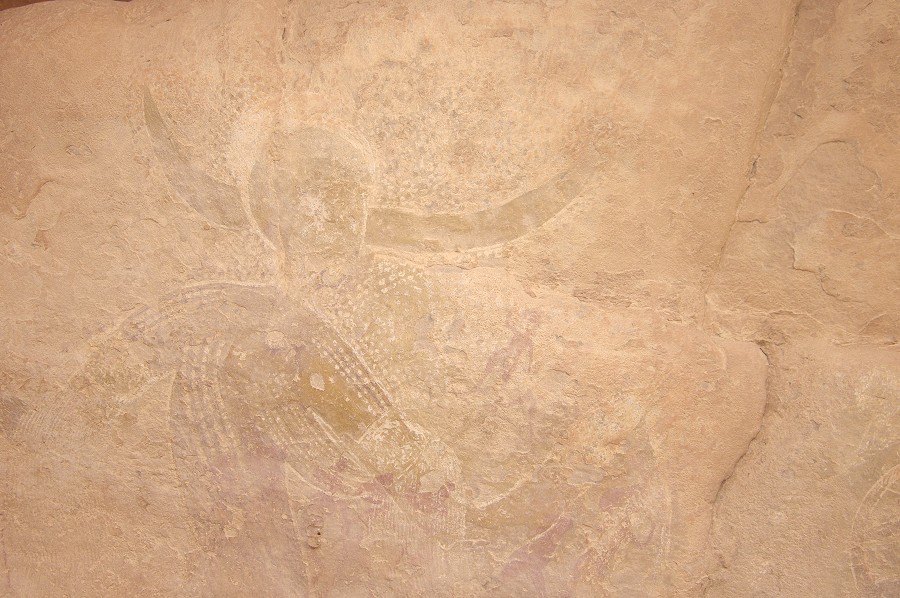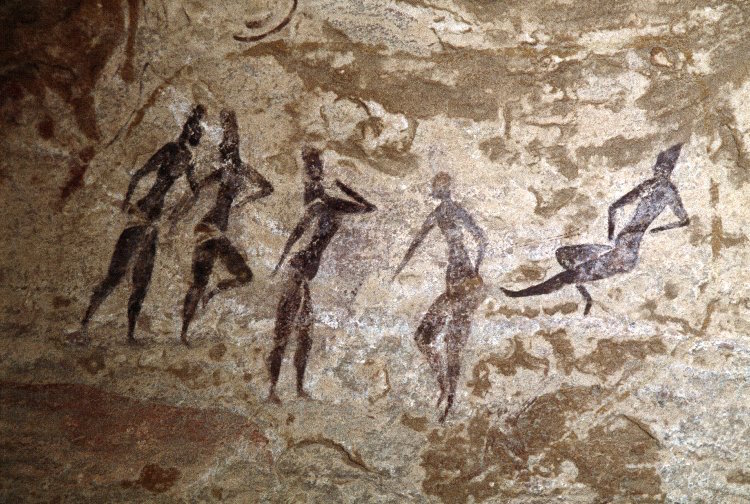Prehistoric rock art known as “Running Horned Woman” or “Horned Goddess”, which dates to 6,000 – 8,000 years ago. It is located in Tassili n’Ajjer, a national park in the Sahara Desert, Algeria, Africa. The rock art depicts a female figure with “horns” which might reflect the integration of domestic cattle into daily life. When French archaeologist Henri Lhote came across the rock art in the 1950s he swabbed the wall with water and described what he saw:

“On the damp rock surface stood out the gracious silhouette of a woman running. One of her legs, slightly flexed, just touched the ground, while the other was raised in the air as high as it would normally go. From the knees, the belt and the widely outstretched arms fell fine fringes. From either side of the head and above two horns that spread out horizontally was an extensive dotted area resembling a cloud of grain falling from a wheat field. Although the whole assemblage was skillfully and carefully composed there was something free and easy about it…”

This prehistoric art is one of over 15,000 located within the national park, some of which possibly date back to over 12,000 years.
Across the arid Sahara Desert you will find prehistoric rock art dating back many millennia. Some of the art depicts animals and plants which are not seen in the desert today. But the Sahara was once green with rivers, grasslands, trees, and an abundance of animals including hippos, crocodiles, gazelles and giraffes. There were also huge lakes, one of which, Lake Mega Chad, though just south of the present-day desert, was larger than any lake on the planet today.
#archaeohistories






